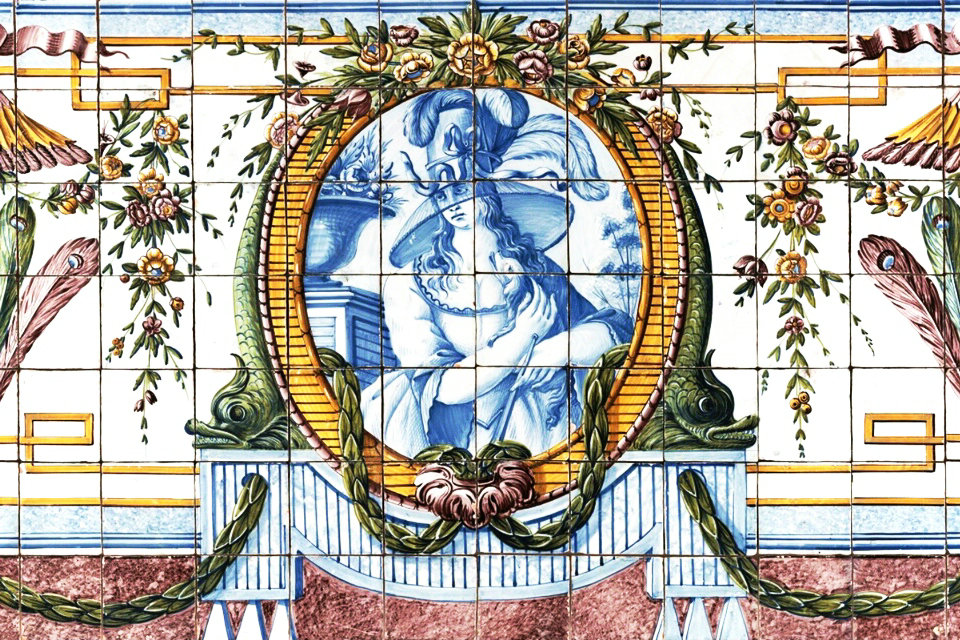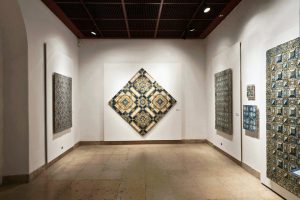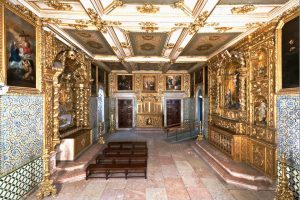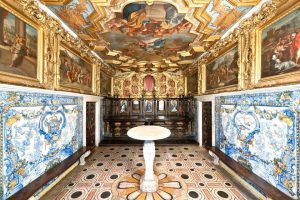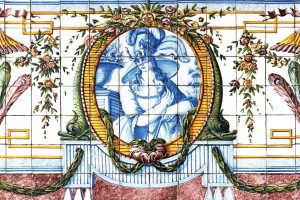The assimilation, both in azulejos and in three-dimensional ceramic ware, of the formal and technical values of the Neoclassical style which were to continue as an eclectic expression until about 1830, began in the Real Fábrica de Louça in Rato, Lisbon (1765-1835) in the last decade of the 18th century.
Large quantities of ornamental ashlars were produced, which were very popular with and widely used by the middle-class.
The collection at the National Azulejo Museum consisting of seven panels with captions alluding to the História do Chapeleiro António Joaquim Carneiro [The Story of António Joaquim Carneiro the Hatter] is paradigmatic of this new type of commission. These panels recount the tale of the upward social mobility of a poor boy whose hard work made him a wealthy burgher.
During the 19th century, the expansion of cities and the development of new urban areas together with a more individualistic mentality regarding success and the ostentation of a work-acquired status, led to the growing use of azulejos on façades as a way to mark out otherwise indistinct buildings with aspects that were occasionally related to their owners. Some of the production from factories in the north of Portugal began to be distinguished by the use of relief shapes in azulejos, creating optical effects of light and shade, more accentuated than those to be found in Lisbon.
Ceramics production between the mid-19th century and the early 20th century was marked by the industrialisation of manufacture, so that ceramic objects became part of the day to day life of the Portuguese, whilst azulejos were affirmed as revetments for façades, marking the urban spaces. In parallel to this democratisation process we noted, as a cut-off point, the emergence of authorial production with an essentially decorative vocation. The Art Nouveau influences received directly from France, but later used in Bordalo Pinheiro’s work, could be seen both in the creation of three-dimensional items and in azulejos.
National Azulejo Museum
The National Tile Museum of Portugal, is an art museum in Lisbon, Portugal dedicated to the azulejo, traditional tilework of Portugal and the former Portuguese Empire, as well as of other Iberophone cultures. Housed in the former Madre de Deus Convent, the museum’s collection is one of the largest of ceramics in the world.
The Museu Nacional do Azulejo is housed in the former Convent of Madre de Deus founded in 1509 by Queen Leonor. Its collection presents the history of glazed tiles in Portugal, from the second half of the XV Century to the present day, proving that the tile remains a living and an identity expression of Portuguese culture.
Occupying various spaces in the building’s former convent wings, MNAz’s permanent exhibition documents the history of tile in Portugal from the 16th century to the present.
In close connection with the presented tile heritage, other ceramic objects belonging to the museum’s collections are integrated into the expository discourse.
